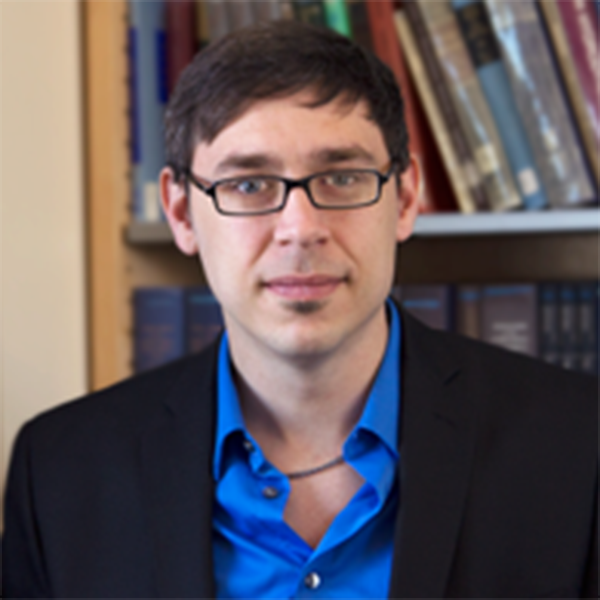Research Areas
- Ultracold Matter
- Engineering Quantum Matter
- Quantum Phases and Phase Transitions
Research Description
Prof. Hazzard works to develop a theoretical understanding of many-body quantum matter, especially in ultracold atoms and molecules. Many of the most important phenomena in modern science are emergent, where collections of constituents give rise to behaviors unlike those of the constituents themselves. In physics, these constituents are often quantum, such as electrons, photons, or atoms. When this quantum matter interacts strongly, understanding it can be incredibly difficult. However, comprehending such matter promises to lead to materials that break the constraints of our present frameworks, to realize otherwise-impossible behaviors by driving systems out of equilibrium, and to enable quantum-enhanced devices for sensing, communication, and computation – devices that exceed the performance of any non-quantum technology.
Hazzard’s work mostly focuses on developing a better theoretical understanding of many-body phenomena in ultracold matter, and working with experimentalists to control and engineer phenomena at the complexity frontier of quantum mechanics. Ultracold matter offers a unique setting for this, with its high level of control.
Hazzard’s group works closely with experimentalists, and the group employs a diverse range of analytic and numerical theoretical tools. They try to find – or develop – the right tool to approach a problem rather than shoehorn a particular theoretical method to it. This philosophy has helped experimentalists pioneer many-body systems, such as ultracold polar molecules, SU(N) Fermi-Hubbard models, and tunnel-coupled cold atoms in microtraps. It has also led to the discovery of new exactly solvable quantum many-body models, new numerical too, and a deeper conceptual understanding of many-body physics occurring in ultracold and condensed matter.
Biography
Hazzard completed his B.S. from The Ohio State University and then received his Ph.D. in theoretical physics from Cornell University in 2010. He was a postdoc from 2010 to 2014 at JILA/NIST/CU-Boulder. He joined the Rice faculty in 2014.
Selected Publications
- M. L. Wall, K. R. A. Hazzard, A. M. Rey. Quantum magnetism with ultracold magnetism, arxiv:1406.4758 (review article, 2014)
- A. M. Kaufman, B. J. Lester, C. M. Reynolds, M. L. Wall, M. Foss-Feig, K. R. A. Hazzard, A. M. Rey, and C. A. Regal, Two-particle quantum interference in tunnel-coupled optical tweezers, Science 345, 306 (2014).
- B. Zhu, B. Gadway, M. Foss-Feig, J. Schachenmayer, M. L. Wall, K. R. A. Hazzard, B. Yan, S. A. Moses, J. P. Covey, D. S. Jin, J. Ye, M. Holland, and A. M. Rey. Suppressing the loss of ultracold molecules via the continuous quantum Zeno effect, Physical Review Letters 112, 070404 (2014).
- B. Yan, S. A. Moses, B. Gadway, J. P. Covey, K. R. A. Hazzard, A. M. Rey, D. S. Jin, and J. Ye, Observation of dipolar spin-exchange interactions with lattice-confined polar molecules, Nature 501, 521 (2013).
- K. R. A. Hazzard, S. R. Manmana, M. Foss-Feig, and A. M. Rey. Far-from-Equilibrium Quantum Magnetism with Ultracold Polar Molecules, Physical Review Letters 110, 075301 (2013).
- L. Bonnes, K. R.A. Hazzard, S. R. Manmana, A. M. Rey, and S. Wessel. Adiabatic Loading of One-Dimensional SU(N) Alkaline-Earth-Atom Fermions in Optical Lattices, Physical Review Letters 109, 205305 (2012).
- K. R. A. Hazzard, V. Gurarie, M. Hermele, and A. M. Rey. High-temperature properties of fermionic alkaline-earth-metal atoms in optical lattices, Physical Review A 85, 041604(R) (2012)
- M. Foss-Feig, K. R. A. Hazzard, J. J. Bollinger, A. M. Rey, and C. W. Clark. Dynamical quantum correlations of Ising models on an arbitrary lattice and their resilience to decoherence, New Journal of Physics 15, 113008 (2013).
- S. S. Natu, K. R. A. Hazzard, and E. J. Mueller. Local versus global equilibration near the bosonic Mott-superfluid transition, Physical Review Letters 106, 125301 (2011).
- K. R. A. Hazzard and E. J. Mueller. Techniques to measure quantum criticality in cold atoms, Physical Review A 84, 013604 (2011)

